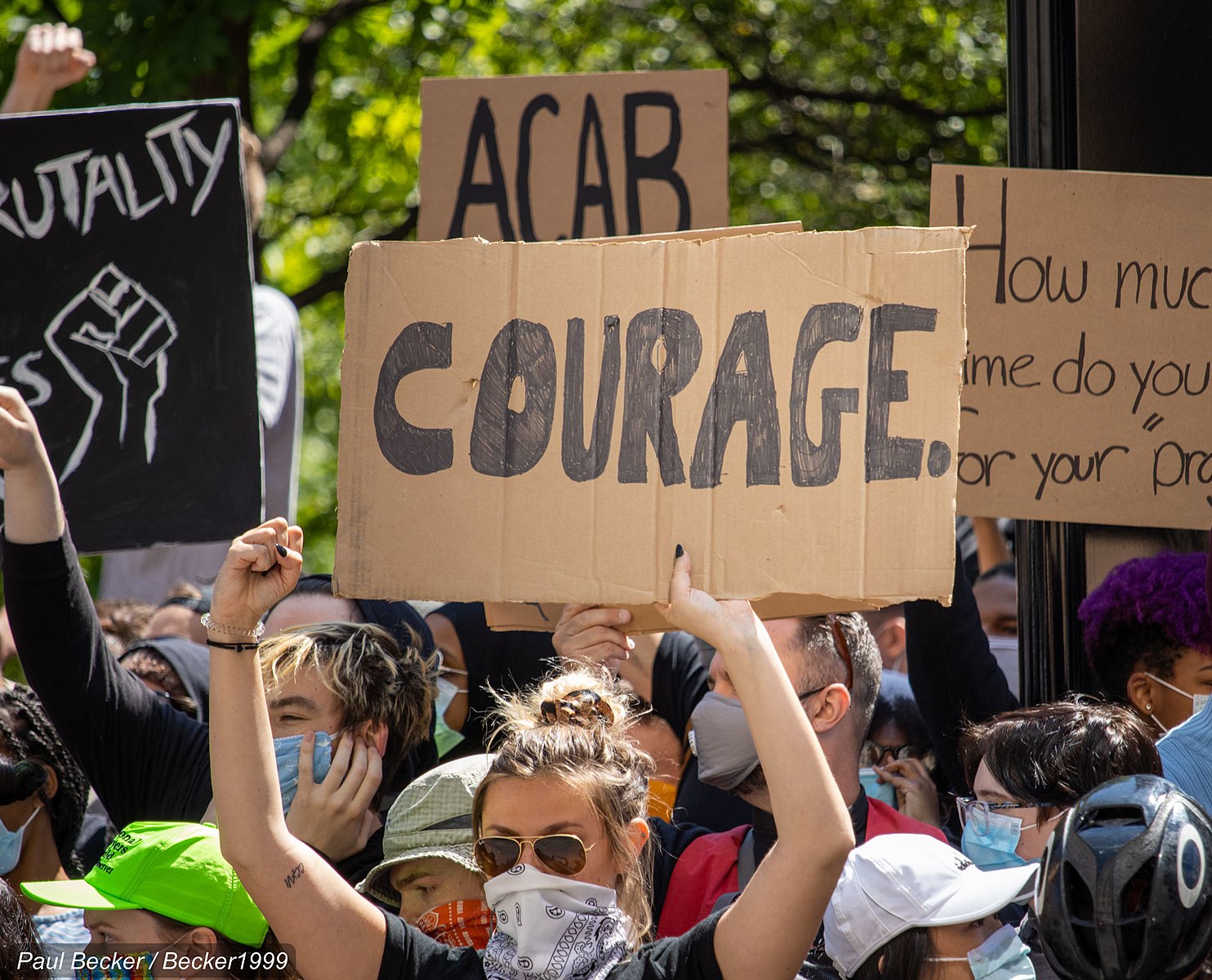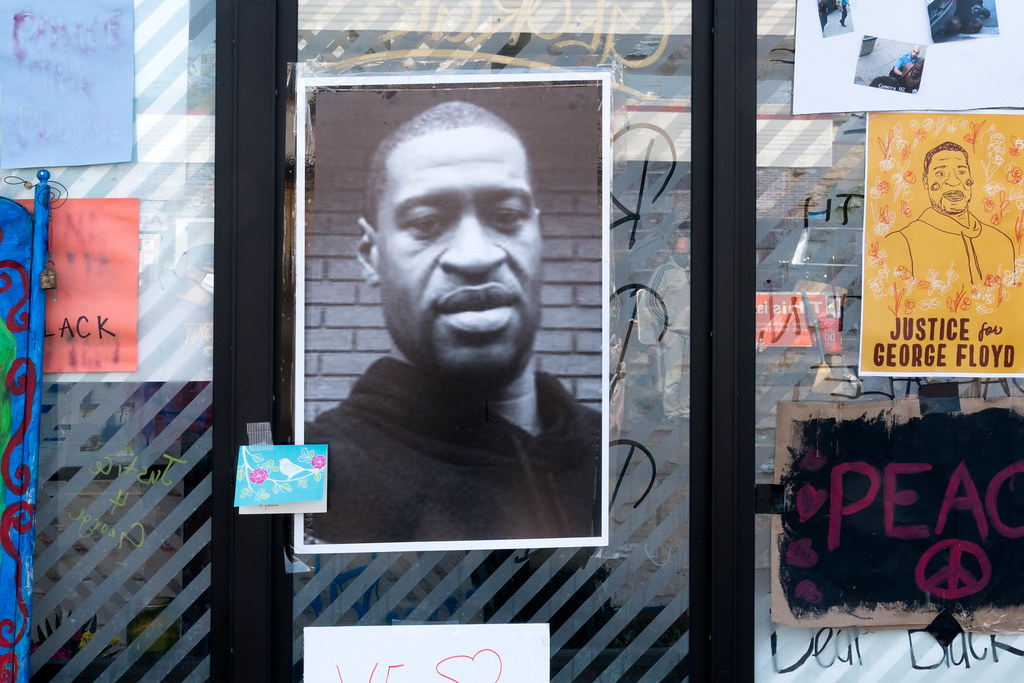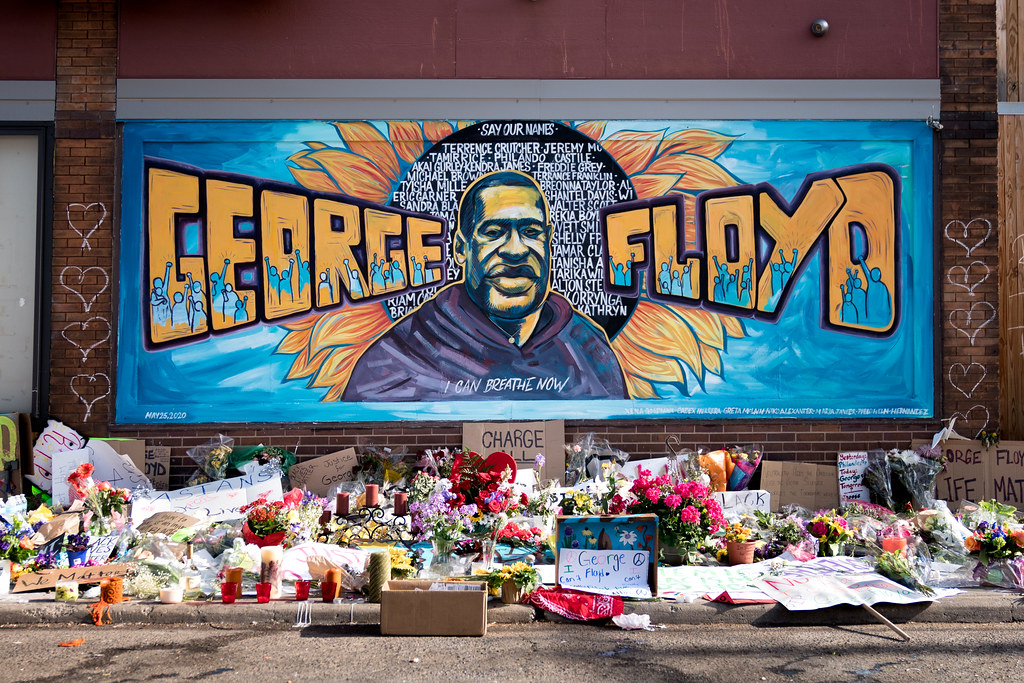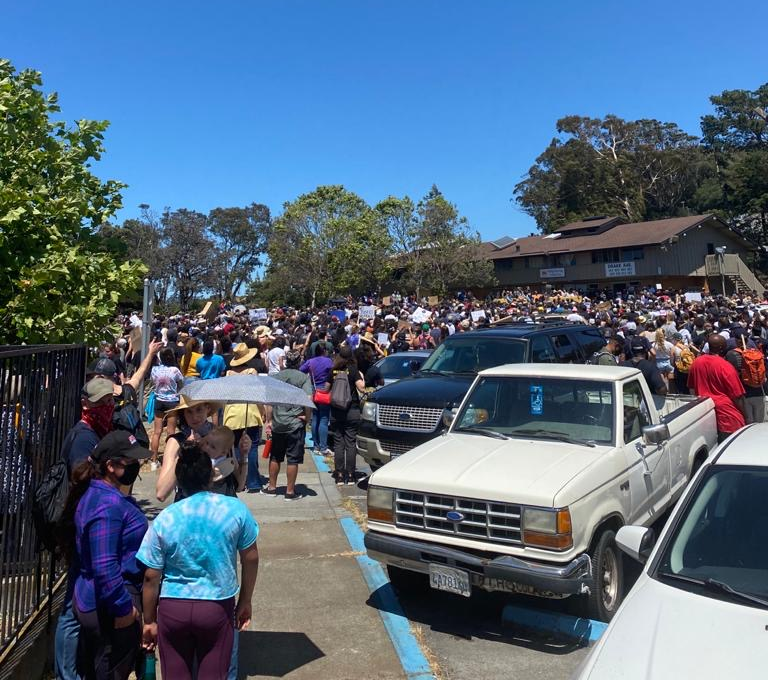
Since May 26, 2020, cities across the US have been gripped by protests seeking justice for George Floyd, an unarmed African American man who died in police custody on May 25, 2020. The incident has led to one of the biggest displays of unrest seen in America in 50 years and reignited the debate about law enforcement and race relations globally. From May 30 to June 1, 2020, thousands of demonstrators in cities across the world — from London to Berlin to Auckland to Brazil — marched in solidarity with their US counterparts to demand justice for Floyd and to protest against the mistreatment of minority groups in their respective countries.
Who was George Floyd?
Originally from Houston, TX, Floyd, 46, moved to Minneapolis, MN, in 2014 in search of new opportunities. After a brief stint at the downtown Salvation Army store, he landed a job as a security guard at Conga Latin Bistro, where he was known as "Big Floyd." The bistro's owner Jovanni Thunstrom describes the six foot six inches tall Floyd, as a cheerful man with a "good attitude." He also held a second job as a truck driver. Unfortunately, in the weeks leading to his death, Floyd had been laid off from both due to Minnesota's COVID-19 stay-at-home orders.

What happened on the night of May 25, 2020?
On the evening of May 25, 2020, Floyd purchased a pack of cigarettes with what an employee of Minnesota grocery store Cup Foods believed was a counterfeit $20 bill. When Floyd refused to return the merchandise, the employee called 9-1-1 and told the dispatcher that Floyd had given them "fake bills."
Soon after, a police car with four officers arrived and asked Floyd to step out of his vehicle. A video of the arrest, captured by a passerby, shows Minneapolis police officer Derek Chauvin kneeling on the neck of the handcuffed Floyd, who is repeatedly pleading, "I can't breathe." By the time Chauvin lifted his knee — a full eight minutes and 46 seconds later — Floyd had lost consciousness. Shortly after, at 9:25 pm, the 46-year-old was pronounced dead by the paramedics called by the police. The footage of the unnecessary police brutality, released on social media, incited outrage nationwide.

What led to the protests?
To prevent the situation from escalating, Chauvin and the three other officers — Tou Thao, Thomas Lane, and J. Alexander Kueng — who were present at the time of the arrest, were fired from the police force on May 26, 2020. However, that was not enough to appease Minneapolis residents, who wanted more accountability for Floyd's death. That evening thousands of people gathered at the intersection of East 38th Street and Chicago Avenue, where the incident had occurred to demand justice for Floyd. The protest, which began peacefully, escalated as the night went on, with demonstrators damaging police cars and burning down the precinct building where Chauvin was stationed.
On May 29, 2020, the officials once again tried to defuse the situation by charging Chauvin with third-degree murder and second-degree manslaughter. The accusations, which do not require prosecutors to prove that Chauvin intended to kill Floyd to get a conviction, carry a maximum sentence of up to 35 years. However, Minnesota's state guidelines usually recommend 12 1/2 years for a conviction on the murder charge and four years for manslaughter.

The charges, which many viewed as lenient, and the lack of accountability of the other officers, enraged the country. On May 30, 2020, residents of cities across America — from Seattle to New York City — joined Minnesotans in protesting against the police brutality. The demonstrations have since spread to over 200 cities throughout all 50 states. Characterized by loud, unified chants of Floyd's last words "I can't breathe," and "no justice, no peace," the protests have at times descended into violence with looting, vandalism, and fires, forcing cities to impose nightly curfews, with some starting as early as 6 pm.
Alarmed at the growing unrest, city officials and leaders are urging people to end the violence and seek out more peaceful ways to accomplish change. "There are many, many ways for us to work together in a constructive manner that empowers our community to speak up with a loud voice," says St. Paul, MN Mayor Melvin Carter, the city's first African American mayor.
George Floyd's brother, Terrence Floyd, is also pleading with protestors to end the destruction of their communities. "My brother wasn't about that. My brother was about peace," he says. "You'll hear a lot of people say he was a gentle giant."

What additional steps is Minnesota taking to rectify the injustice?
The large-scale demonstrations have not been in vain. On June 2, 2020, the Minnesota Department of Human Rights announced an investigation into the Minneapolis police policies and procedures over the past ten years to determine whether the department has engaged in discriminatory practices toward people of color. "This is not about holding people personally criminally liable," said Human Rights Commissioner Rebecca Lucero, who will lead the investigation. "This is about systems change."
In yet another critical step for justice, on June 3, 2020, Minnesota Attorney General Keith Ellison elevated the charges against Chauvin to second-degree murder, which carries a harsher sentence of about 40 years. The three other officers present have been charged with aiding and abetting murder.
How do we prevent such a situation again?
While Floyd may get the justice he deserves, other victims of police abuse have not been as fortunate. Over the years, there have been numerous incidents of police brutality against unarmed and innocent African Americans, many of whom have been killed while engaged in day-to-day activities. In most cases, the officers involved have been let go with a lenient sentence, or even worse, absolved of all wrongdoing. Hopefully, law enforcement officials across the US will re-examine their procedures and make the changes necessary to ensure equitable treatment of all individuals, regardless of color or creed.
George Floyd is survived by his six-year-old daughter Gianna, who lives with her mother in Houston, Texas, where he will be laid to rest on Tuesday, June 9, 2020.
R.I.P George Floyd
Resources: latimes.com, Vox.com, CNN.com, www.aljazeera.com
